Svalbard - Tailor Made
Experience the magic of the midnight sun on the Svalbard archipelago and the world's northern most town of Longyearbyen.
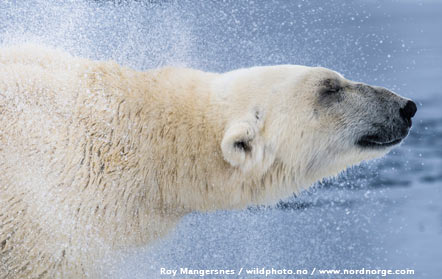
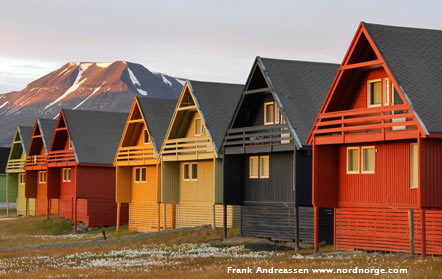
All our holidays are available without flights if you are travelling from outside the UK.
Just make your enquiry as normal and we will be able to tailor-make your enquiry.
Okay


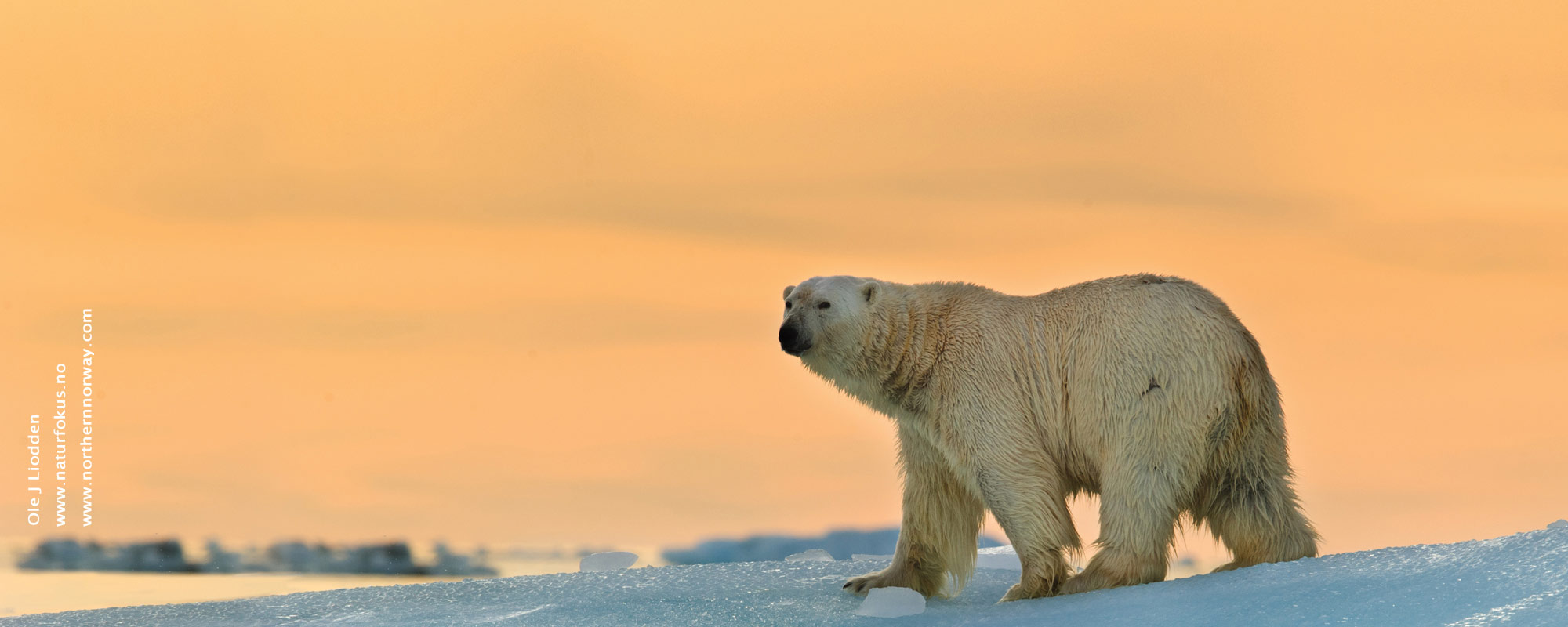
Experience the magic of the midnight sun on the Svalbard archipelago and the world's northern most town of Longyearbyen.


Overview
This holiday is a journey into the northern wilderness archipelago of Svalbard. It is for those with a love of nature, an appreciation for spectacular scenery and special locations and will appeal to anyone looking for a holiday with a difference. Svalbard is an environmentally sensitive location and the ice coverage in winter is often used as an indicator of global warming.
History
Svalbard has a complicated history dating back to the 12th century. Whaling, hunting and fishing have played an important role and many countries tried to claim Svalbard during the 16th and 17th centuries, including Britain, France and Denmark. Following WWI, the 1920 Svalbard Treaty granted sovereignty to Norway and Svalbard became an economic free and demilitarized zone. Today Longyearbyen and Svalbard have an established, low-key tourism industry.
Geography
Glaciation covers 60% of Svalbard and the highest point is 1700m above sea level. Longyearbyen is the world’s most northerly town and has just 2700 residents and this northerly latitude means the midnight sun shines from the end of April until the end of August – leave your body clock at home. There are no roads on Svalbard outside the settlements, so villages are connected by boat, snowmobiles and aircraft.
Nature
Polar bears are the symbol of Svalbard and one of the main tourist attractions. You will also find reindeer and a myriad of bird and marine wildlife. It is not unusual to see whales and seals during your stay on Svalbard, and this holiday includes options for some wonderful wildlife experiences during boat safaris around Isfjord. There are approximately 3000 polar bears on Svalbard, 7 national parks, 15 bird sanctuaries and 6 nature reserves, all allow these animals to thrive in the Arctic.
Day 1
Fly from UK to Longyearbyen on Svalbard (via Oslo)
Typical flight times
London Heathrow to Oslo 1730-2040
Oslo to Longyearbyen 2135-0030
Land under the midnight sun during the summer
Transfer to your hotel
Check in
Day 2 onwards
Breakfast
Days at leisure to enjoy this amazing location
We recommend you book activities to make the most of your time on Svalbard (see activities tab)
Final Day
Breakfast
Transfer to the airport
Typical flight times
Longyearbyen to Oslo 1305-1600
Oslo to Heathrow 1715-1830
times are approximate and other UK departure points may be available on request.
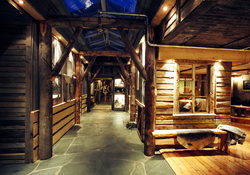
Located right at the heart of Longyearbyen close to restaurants, pubs and shops Basecamp Hotel is a rustic hotel full of character reflecting traditional life in the Arctic. The bedrooms are decorated in a traditional trapper’s style with driftwood, sealskins, pictures and objects that illustrate life as a trapper.
Each of the 16 rooms is individually decorated and no two rooms are alike. They are all en suite with comfortable beds and wireless internet. Many of the rooms are twin rooms and they all offer a view over the town and towards the mountains surrounding the Longyeardalen valley.
Keeping true to the trappers style, there are no televisions in the rooms, but you are more than welcome to borrow some arctic books from the lobby and just enjoy the arctic atmosphere in your room. If you still yearn after evening programs you can climb up to the loft where there is a big screen television for guests to use. You can also rent bikes from reception.
Click on the image for more photos.
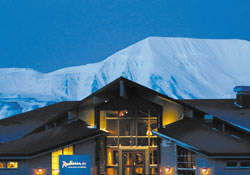
In Scandinavia, and especially on Svalbard, it is customary to remove your shoes when you enter someone’s house or a hotel. It creates a warm welcoming atmosphere.
Raddison Blu Polar Hotel is located in the centre of this small town and has 95 comfortable ensuite rooms and suites. This is a place to relax and escape the extremities of the Arctic elements. It may be close to the North Pole but high speed WiFi is available throughout the hotel and a comprehensive breakfast buffet is served each morning.
The in-house restaurant Nansen serves internationally inspired meals in front of an open fire and the Barentz bar serves beer from the world’s northern most brewery, Svalbard Bryggeri.
Click on the image for more photos.
The activities vary considerably throughout the seasons. The first snow usually arrives in September and the melts away in May.
The northern lights season on Svalbard is from late September to mid-February and the midnight sun is visible from mid-April to late August.
Svalbard is a year round destination and we can tailor make your holiday to your individual requirements. Summer is a particularly busy period under the midnight sun so we have some fixed departures to offer you the best flights between the UK and Svalbard.
Winter 2015/16
Flexible arrival and departure dates.
Summer 2016
19 to 24 June (5 nights)
26 June to 1July (5 nights)
3 to 8 July (5 nights)
13 to 17 July (4 nights)
1 to 5 August (4 nights)
8 to 12 August (4 nights)
15 to 19 August (4 nights)
22 to 26 August (4 nights)
Prices from (based on Radisson Blu Polar Hotel)
£930 per adult (4 nights)
£1025 per adult (5 nights)
Upgrades from
£60 per person per night for a Junior Suite
£80 per person per night for a Suite
Supplements from (based on 4 nights)
£615 per child on a sofa bed (must be a junior suite)
£195 single supplement
Includes
Flights from UK to Longyearbyen (via Oslo)
Airport transfers to and from Longyearbyen airport and your hotel
Bed and breakfast accommodation at your hotel in Longyearbyen
Svalbard Information
Svalbard is unlike any other location and we strongly recommend you read the information below so you have a good understanding of what life is like deep inside the Arctic Circle. It is for those with a love of nature, an appreciation for spectacular scenery and special locations and will appeal to anyone looking for a holiday with a difference. Svalbard is an environmentally sensitive location and the ice coverage in winter is often used as an indicator of global warming.
Polar Bears
Polar bears are the largest living predator on Earth and are generally recognised as the symbol of Svalbard. There are 3000 polar bears on Svalbard and these sensitive creatures are vulnerable to climate change, pollutants and human interference.
Rules protecting polar bears are strict and it is forbidden to lure, pursue, seek out or disturb them; hence there are no ‘polar bear excursions’. Polar bears can appear anywhere at any time on Svalbard and you should never venture outside the settlement without a qualified guide.
The Svalbard Dictionary
Svalbard – is the name given to the entire archipelago.
Spitsbergen – is the name of the largest island within the Svalbard Archipelago.
Longyearbyen – is the main town / settlement on Spitsbergen and Svalbard.
Midnight sun – the period when the sun does not set (mid-April to late August)
Polar night – the period when the sun does not rise (late October to mid-February)
Northern Lights
The northern lights are potentially visible on Svalbard mid-September to mid-March.
Weather and Climate
A land of extremes! With endless summer days and never ending winter nights the weather can be unpredictable so close to the North Pole. In the middle of summer temperatures average +7C but can be as warm as +17C or as cold as 0C. In the depths of winter, when Svalbard is covered in a blanket of virgin snow, average temperatures are -15C and extremes can reach 0C and -30C. During the winter warm outer clothing can be included in your holiday.
Passports and Visas
All visitors need to go through passport control. The identity of all travellers between Svalbard and the Norwegian mainland will be checked upon arrival and departure. Please note that if you need a visa to arrive to Norway (not relevant to British passport holders) you will need another visa (double entry) to enter Norway again after your visit to Svalbard.
Currency
The Norwegian Krona is used on Svalbard and international credit and debit cards are widely accepted so only a small amount of local currency is recommended.
Electricity
Standard European sockets at 220V.
History
Svalbard has a complicated history dating back to the 12th century. Whaling, hunting and fishing have played an important role and many countries tried to claim Svalbard during the 16th and 17th centuries, including Britain, France and Denmark. Following WWI, the 1920 Svalbard Treaty granted sovereignty to Norway and Svalbard became an economic free and demilitarized zone. Today Longyearbyen and Svalbard have an established, low-key tourism industry.
Geography
Glaciation covers 60% of Svalbard and the highest point is 1700m above sea level. Longyearbyen is the world’s most northerly town and has just 2700 residents and this northerly latitude means the midnight sun shines from the end of April until the end of August – leave your body clock at home. There are no roads on Svalbard outside the settlements, so villages are connected by boat, snowmobiles and aircraft.
Nature
Polar bears are not the only animals on Svalbard! You will also find reindeer and a myriad of bird and marine wildlife. It is not unusual to see whales and seals during your stay on Svalbard, and boat safaris around Isfjord offer some wonderful wildlife experiences. There are 7 national parks, 15 bird sanctuaries and 6 nature reserves; all allow these animals to thrive in the Arctic.
Overview
This holiday is a journey into the northern wilderness archipelago of Svalbard. It is for those with a love of nature, an appreciation for spectacular scenery and special locations and will appeal to anyone looking for a holiday with a difference. Svalbard is an environmentally sensitive location and the ice coverage in winter is often used as an indicator of global warming.
History
Svalbard has a complicated history dating back to the 12th century. Whaling, hunting and fishing have played an important role and many countries tried to claim Svalbard during the 16th and 17th centuries, including Britain, France and Denmark. Following WWI, the 1920 Svalbard Treaty granted sovereignty to Norway and Svalbard became an economic free and demilitarized zone. Today Longyearbyen and Svalbard have an established, low-key tourism industry.
Geography
Glaciation covers 60% of Svalbard and the highest point is 1700m above sea level. Longyearbyen is the world’s most northerly town and has just 2700 residents and this northerly latitude means the midnight sun shines from the end of April until the end of August – leave your body clock at home. There are no roads on Svalbard outside the settlements, so villages are connected by boat, snowmobiles and aircraft.
Nature
Polar bears are the symbol of Svalbard and one of the main tourist attractions. You will also find reindeer and a myriad of bird and marine wildlife. It is not unusual to see whales and seals during your stay on Svalbard, and this holiday includes options for some wonderful wildlife experiences during boat safaris around Isfjord. There are approximately 3000 polar bears on Svalbard, 7 national parks, 15 bird sanctuaries and 6 nature reserves, all allow these animals to thrive in the Arctic.
Day 1
Fly from UK to Longyearbyen on Svalbard (via Oslo)
Typical flight times
London Heathrow to Oslo 1730-2040
Oslo to Longyearbyen 2135-0030
Land under the midnight sun during the summer
Transfer to your hotel
Check in
Day 2 onwards
Breakfast
Days at leisure to enjoy this amazing location
We recommend you book activities to make the most of your time on Svalbard (see activities tab)
Final Day
Breakfast
Transfer to the airport
Typical flight times
Longyearbyen to Oslo 1305-1600
Oslo to Heathrow 1715-1830
times are approximate and other UK departure points may be available on request.

Located right at the heart of Longyearbyen close to restaurants, pubs and shops Basecamp Hotel is a rustic hotel full of character reflecting traditional life in the Arctic. The bedrooms are decorated in a traditional trapper’s style with driftwood, sealskins, pictures and objects that illustrate life as a trapper.
Each of the 16 rooms is individually decorated and no two rooms are alike. They are all en suite with comfortable beds and wireless internet. Many of the rooms are twin rooms and they all offer a view over the town and towards the mountains surrounding the Longyeardalen valley.
Keeping true to the trappers style, there are no televisions in the rooms, but you are more than welcome to borrow some arctic books from the lobby and just enjoy the arctic atmosphere in your room. If you still yearn after evening programs you can climb up to the loft where there is a big screen television for guests to use. You can also rent bikes from reception.
Click on the image for more photos.

In Scandinavia, and especially on Svalbard, it is customary to remove your shoes when you enter someone’s house or a hotel. It creates a warm welcoming atmosphere.
Raddison Blu Polar Hotel is located in the centre of this small town and has 95 comfortable ensuite rooms and suites. This is a place to relax and escape the extremities of the Arctic elements. It may be close to the North Pole but high speed WiFi is available throughout the hotel and a comprehensive breakfast buffet is served each morning.
The in-house restaurant Nansen serves internationally inspired meals in front of an open fire and the Barentz bar serves beer from the world’s northern most brewery, Svalbard Bryggeri.
Click on the image for more photos.
The activities vary considerably throughout the seasons. The first snow usually arrives in September and the melts away in May.
The northern lights season on Svalbard is from late September to mid-February and the midnight sun is visible from mid-April to late August.
Svalbard is a year round destination and we can tailor make your holiday to your individual requirements. Summer is a particularly busy period under the midnight sun so we have some fixed departures to offer you the best flights between the UK and Svalbard.
Winter 2015/16
Flexible arrival and departure dates.
Summer 2016
19 to 24 June (5 nights)
26 June to 1July (5 nights)
3 to 8 July (5 nights)
13 to 17 July (4 nights)
1 to 5 August (4 nights)
8 to 12 August (4 nights)
15 to 19 August (4 nights)
22 to 26 August (4 nights)
Prices from (based on Radisson Blu Polar Hotel)
£930 per adult (4 nights)
£1025 per adult (5 nights)
Upgrades from
£60 per person per night for a Junior Suite
£80 per person per night for a Suite
Supplements from (based on 4 nights)
£615 per child on a sofa bed (must be a junior suite)
£195 single supplement
Includes
Flights from UK to Longyearbyen (via Oslo)
Airport transfers to and from Longyearbyen airport and your hotel
Bed and breakfast accommodation at your hotel in Longyearbyen
Svalbard Information
Svalbard is unlike any other location and we strongly recommend you read the information below so you have a good understanding of what life is like deep inside the Arctic Circle. It is for those with a love of nature, an appreciation for spectacular scenery and special locations and will appeal to anyone looking for a holiday with a difference. Svalbard is an environmentally sensitive location and the ice coverage in winter is often used as an indicator of global warming.
Polar Bears
Polar bears are the largest living predator on Earth and are generally recognised as the symbol of Svalbard. There are 3000 polar bears on Svalbard and these sensitive creatures are vulnerable to climate change, pollutants and human interference.
Rules protecting polar bears are strict and it is forbidden to lure, pursue, seek out or disturb them; hence there are no ‘polar bear excursions’. Polar bears can appear anywhere at any time on Svalbard and you should never venture outside the settlement without a qualified guide.
The Svalbard Dictionary
Svalbard – is the name given to the entire archipelago.
Spitsbergen – is the name of the largest island within the Svalbard Archipelago.
Longyearbyen – is the main town / settlement on Spitsbergen and Svalbard.
Midnight sun – the period when the sun does not set (mid-April to late August)
Polar night – the period when the sun does not rise (late October to mid-February)
Northern Lights
The northern lights are potentially visible on Svalbard mid-September to mid-March.
Weather and Climate
A land of extremes! With endless summer days and never ending winter nights the weather can be unpredictable so close to the North Pole. In the middle of summer temperatures average +7C but can be as warm as +17C or as cold as 0C. In the depths of winter, when Svalbard is covered in a blanket of virgin snow, average temperatures are -15C and extremes can reach 0C and -30C. During the winter warm outer clothing can be included in your holiday.
Passports and Visas
All visitors need to go through passport control. The identity of all travellers between Svalbard and the Norwegian mainland will be checked upon arrival and departure. Please note that if you need a visa to arrive to Norway (not relevant to British passport holders) you will need another visa (double entry) to enter Norway again after your visit to Svalbard.
Currency
The Norwegian Krona is used on Svalbard and international credit and debit cards are widely accepted so only a small amount of local currency is recommended.
Electricity
Standard European sockets at 220V.
History
Svalbard has a complicated history dating back to the 12th century. Whaling, hunting and fishing have played an important role and many countries tried to claim Svalbard during the 16th and 17th centuries, including Britain, France and Denmark. Following WWI, the 1920 Svalbard Treaty granted sovereignty to Norway and Svalbard became an economic free and demilitarized zone. Today Longyearbyen and Svalbard have an established, low-key tourism industry.
Geography
Glaciation covers 60% of Svalbard and the highest point is 1700m above sea level. Longyearbyen is the world’s most northerly town and has just 2700 residents and this northerly latitude means the midnight sun shines from the end of April until the end of August – leave your body clock at home. There are no roads on Svalbard outside the settlements, so villages are connected by boat, snowmobiles and aircraft.
Nature
Polar bears are not the only animals on Svalbard! You will also find reindeer and a myriad of bird and marine wildlife. It is not unusual to see whales and seals during your stay on Svalbard, and boat safaris around Isfjord offer some wonderful wildlife experiences. There are 7 national parks, 15 bird sanctuaries and 6 nature reserves; all allow these animals to thrive in the Arctic.